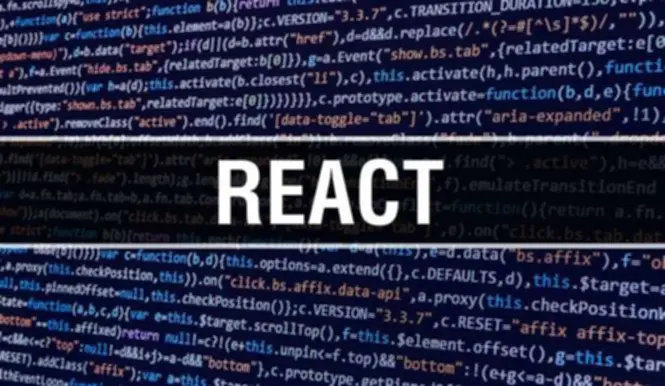This is relatively easy burndown chart meaning utilizing the line chart option out there inside Excel. The chart must be seen to everyone on the group and up to date and reviewed day by day. Scrum is popular as a result of it’s iterative, versatile, incremental, and adaptive. This framework lets the group handle itself, while nonetheless guaranteeing transparency and accountability with a lot of communication, suggestions, and steady enchancment.
Step 4 – Get Hold Of The Final Dataset
In this text, we talk about the elements of a burndown chart, how to use it and its advantages Digital Trust and limitations. When it comes to simplicity, burndown charts win due to their approach. Burnup charts, nonetheless, present more particulars and may inform you concerning the modifications in scope beforehand. Burndown charts will only register modifications in options and scope after the iteration is accomplished. With burnup charts, you can plan for adjustments in scope and increase your efforts to fulfill the deadline.
Scaling Agile Groups Effectively
There is a perfect work remaining line which is a straight line connecting the beginning and ending points. This line represents the sum of estimates for all duties that must be completed, or in other words, the scope of the project. At the endpoint, the best line crosses the x-axis and reveals there isn’t any work left to be done. A burndown chart and a burnup chart are very similar—they have the same components, achieve the same function and are used for agile project administration. As its name suggests, the ideal work remaining line signifies the remaining work that a team has at a selected level of the project or sprint underneath best circumstances. Project managers use previous information to estimate this baseline and draft a straight line across the burndown chart.
Introducing Agile Burndown Charts

Burndown charts also facilitate daily stand-up meetings and dash retrospectives, offering a visible assist for discussing progress and challenges. They help the Scrum Master and Product Owner make informed choices about prioritization, useful resource allocation, and dash planning whereas selling transparency and trust with stakeholders. Once you’ve accomplished your story factors, you’ll have the ability to begin drawing your best remaining time and your precise time. These traces will probably look slightly different unless your actual work finally ends up being the precise effort estimated firstly. Now that you realize what a burndown chart is, how do you, the project manager, go about creating one? Burndown charts may look simple, but there are a couple of steps that you’ll need to complete earlier than finalizing your chart.
Who Creates And Manages The Dash Burndown Chart?
Burndown charts are extra commonly utilized by improvement groups involved with delivering work on time. Within Agile project administration, visibility into progress is essential. Burndown and burnup charts function visible instruments that supply teams perception into their work velocity and overall progression towards project goals. While they each track the quantity of labor accomplished over time, they provide completely different views on project status. Burndown charts are valuable instruments in Agile methodology and Scrum frameworks, offering teams with a transparent, visual illustration of their progress and serving to them stay on monitor. By understanding how to effectively use burndown charts, Agile and Scrum teams can optimize their workflow, improve communication, and ship high-quality software on time and within finances.

Burnup charts present a better picture of a project’s well being when there are frequent scope modifications, as they monitor such changes. They assist in managing stakeholder expectations by clearly exhibiting the impression of added or eliminated work. Planning sprints based on time is what most teams have accomplished historically, however many Agile groups have begun switching to using story points as these are much less subjective.
Neither the burndown nor burnup chart provides any indication of which product backlog objects have been completed. This implies that a team can have a burndown chart that exhibits continued progress, nevertheless it does not indicate whether the staff is working on the correct things. For this cause, burndown and burnup charts can only present a sign of trends somewhat than giving an explicit indication of whether a group is delivering the proper product backlog gadgets. Using these two charts collaboratively could be helpful in offering an entire picture of how the project and particular person sprints have progressed. But keep in mind that the scope of your sprint shouldn’t change once it has begun. Some burndown charts, significantly release burndown charts, embody a projection cone, which predicts the range of potential completion dates based mostly on the staff’s present progress.
- During this step, you will allocate both story factors or hours to each problem or backlog item, relying on what measurement you selected within the earlier step.
- By analyzing move patterns, we identified and eliminated constraints that have been lowering staff effectivity by as much as 40%.
- A burndown chart offers standing reviews and doesn’t take an excessive quantity of time to make and skim, so everybody can maintain track easily.
- Each focuses on delivering small, priceless product increments that can meet buyer wants within the total project.
A burndown chart is used to effectively calculate whether or not your team has enough time to complete their work and is usually used whereas working in brief iterations. Not only can this graphical illustration help determine project completion dates, however it can additionally give you insight into how your team works. A burndown chart helps analyze the work you have to do versus the time it takes you to finish it. This can be a superb device to visualize and better manage your team’s workload so you’ll find a way to prioritize your schedule. Let’s dig into what a burndown chart is and the method to create certainly one of your personal.
The cone is typically created utilizing best-case and worst-case situations. Reading and decoding a burndown chart is important for understanding the progress and health of your agile project administration endeavors. By analyzing the chart’s key parts and the relationships between them, you probably can acquire priceless insights into your team’s progress and make data-driven choices. In this section, we’ll explore the method to read a burndown chart successfully, which is an important skill for any scrum master or project manager. This permits them to adapt to adjustments, optimize their workflow, and constantly ship worth to their clients.
This framework begins with small, centered adjustments and gradually expands based mostly on demonstrated success and team readiness. The software program development context naturally aligns with agile principles because of its inherent flexibility and need for rapid adaptation. You can use the “Adaptive Metrics Framework” – a system that enables teams to adjust their metrics based on project context and team maturity.
Beyond its project administration utility, a Burndown Chart is an excellent motivational tool for team members. The constant visible comparison of precise performance against the best on the graph encourages consistent effort. This weblog publish explains tips on how to use an Agile Burndown Chart to monitor project progress. You can create your burndown chart manually using Google Sheets or Excel by plotting your timeline and the whole duties (or hours of tasks) required for completion. This state of affairs is frustrating for you, your staff, and anyone else who’s relying in your timely completion of the work.
Lucid is proud to serve top businesses around the globe, together with customers such as Google, GE, and NBC Universal, and 99% of the Fortune 500. Lucid partners with trade leaders, together with Google, Atlassian, and Microsoft. Since its founding, Lucid has obtained numerous awards for its products, business, and office culture. The builders are answerable for making the data clear in order that stakeholders can maintain updated on the project’s progress. Looking on the estimated work line towards the actual work line, the product proprietor determines if the project is on schedule or not on time. If the project is too far delayed, the product owner may decide to update the discharge plan in order to get the project back on schedule.
Finally, as with a burndown chart, this can run alongside a line that represents the ideal velocity your team ought to be aiming for. By reviewing the work completed to the ideal velocity at any point within the dash, you can quickly see whether you’re ahead of or not on time. You can even revisit your burndown charts in an agile retrospective to tell the next sprint. If the burndown charts show that your team is constantly finishing sprints early, you might not be committing to enough work.
Burndown charts are concise standing stories that present fast updates and easy interpretation and keep all staff members informed. Analyze the Burndown Chart throughout sprint retrospectives to establish patterns and developments. This retrospective analysis is a basis for continuous improvement, allowing the staff to make informed adjustments for enhanced performance in subsequent sprints. Conversely, if the actual line is beneath the ideal, it signifies much less work than predicted, signifying a project forward of schedule. Daily updates ensure accuracy, with deviations indicating potential schedule variations.
Transform Your Business With AI Software Development Solutions https://www.globalcloudteam.com/ — be successful, be the first!
